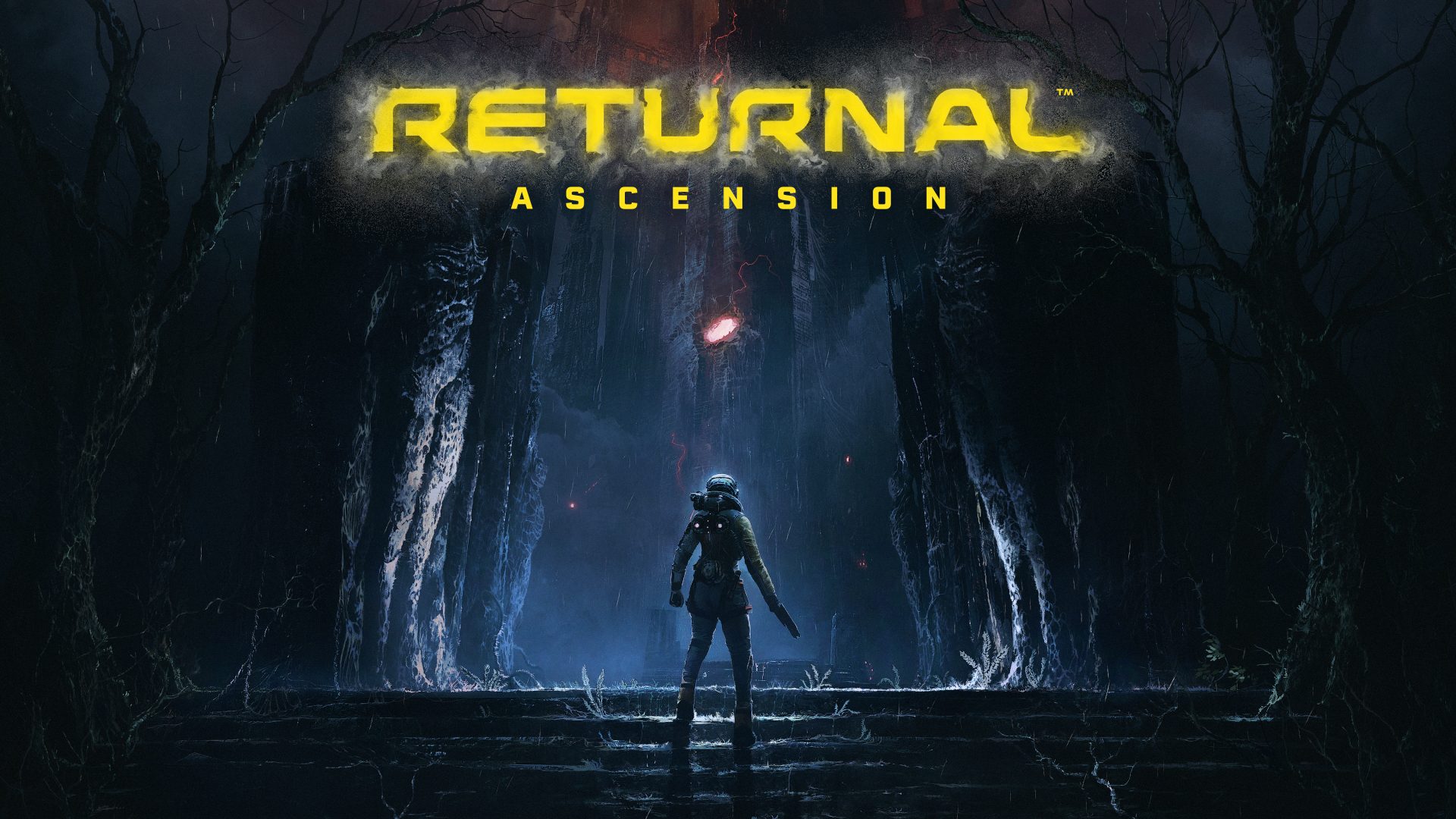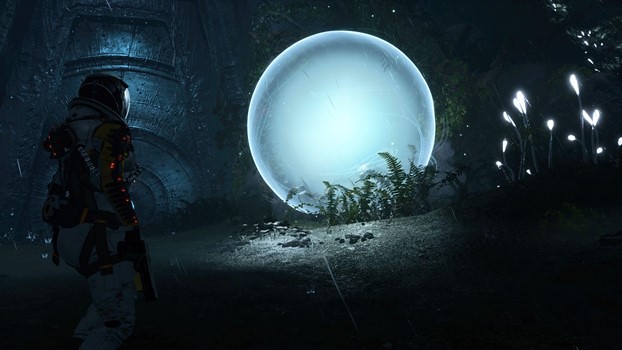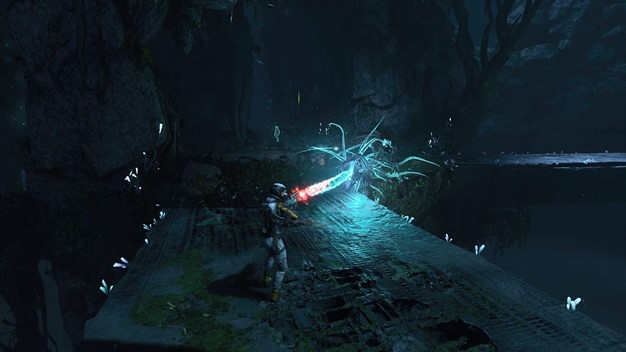Products You May Like
When we talked about adding online co-op to Returnal at Housemarque, the biggest question we had was: how can we support co-op play in an experience that’s intentionally surreal, isolating, and finely-balanced to challenge a single player’s ability to survive?
The Chronosis
It starts just with setting the mood: how do we get another player into Returnal? Well, through Chronosis of course.
Players with a PlayStation Plus subscription interact with a Chronosis and, suddenly, another ASTRA Scout enters their cycle, staring down and analyzing Selene as she emerges. It feels very surreal and uncomfortable — which makes it absolutely perfect for Returnal.
Beyond that, we really built the multiplayer experience around the idea that players can get help to progress through the game. A hosting player invites another player to join their session to help them overcome their current challenge. The host keeps this progress, whereas the joining player increases their Scout Rank, Weapon Traits, and Databank. At first, we had Chronosis in multiple places in each of our biomes, but we ultimately realized it was unintentionally resulting in players just engaging in Co-Op before major boss battles. Now, Chronosis are at the beginning of each Biome, so players are encouraged to explore and see how the game plays and evolves with a partner and how divvying up resource scarcity is immediately a new dynamic.
Keeping the edge
Of course, we wanted to preserve the challenge, drama, and intensity that Returnal is known for so some of our new co-op mechanics went through a lot of iteration to ensure those crucial elements of the game were maintained.
Our most brutal example was our initial approach to handling a “downed” player; so long as one player is standing, a downed player can be revived and brought back into the fray. Reviving a downed player initially required the living player to sacrifice some of their health to revive their teammate.
Turns out: this was mean. Five minutes into a new cycle, both players would be down to bare minimum health and stuck in a vicious cycle of one-hit kills.
While playtesting one day, we realized that, really, reviving a downed player already had required a very valuable resource: time. Reviving your teammate mid-combat, especially against an Elite or a Boss where every millisecond matters, is all it really takes to maintain difficulty while ensuring both players can stay active in the game at once.
Another element of the game that we changed for the co-op experience are the House and Ship sections that are experienced from Selene’s first-person perspective. We ended up removing these sections while playing Multiplayer so we could keep the speed and intensity of the multiplayer sessions high throughout the experience.
Finally, Returnal has also been rebalanced specifically for co-op play so Atropos remains the perilous planet brimming with deadly monsters that we all know and love — just now with some room for a friend.
The joys of networking
Integrating multiplayer logic into Returnal was not the simplest endeavor and is, largely, a significant technical engineering challenge and as we prepared for ship we certainly encountered more than a few “issues” along the way. Such as a Titanops that became quite attached to its prey and the occasional “Other” Scout that’s been through one too many cycles.
Beyond just the technical complications, we also talked and worked through a host of Design and UI/UX considerations to integrate another player into a host’s world as smoothly as possible. One of the first accessibility issues we ran into was simply being able to see the other player in a scene filled with fast-moving enemies and bullets everywhere. We didn’t want to go too over-the-top with this solution, so we integrated a subtle ASTRA-Green outline shader whenever your teammate moved beyond a certain distance. We also created a slick suit variation to complement the visual differentiation between Selene and the “Other” Scout.
We also iterated on our core HUD for co-op by providing additional information for tracking where your teammate is, how far they’re getting from you, and, most significantly, the “Scout Rank” mechanic to reward players who join other games to assist their fellow ASTRA Scouts. This rank is prominently displayed for both players in a session and provides additional Ether for the visiting player on every rank-up.
Conclusion
Thanks to everyone involved in Returnal: Ascension and special thanks to our co-development studio Climax Studios. Now that Returnal supports co-op, we’re really excited to see players getting back into the game and call in some additional support to get past potential tough spots in the game; being able to fight through some of Returnal’s boss sequences with a partner has already been exhilarating during our internal playtests.
Which is to say: “Bring it, Nemesis. We’ll get you now.”
Returnal soundtrack vinyl
We’re also thrilled to announce that the acclaimed score to Returnal by Bobby Krlic will finally be releasing on vinyl with custom art, available to pre-order now from here.





